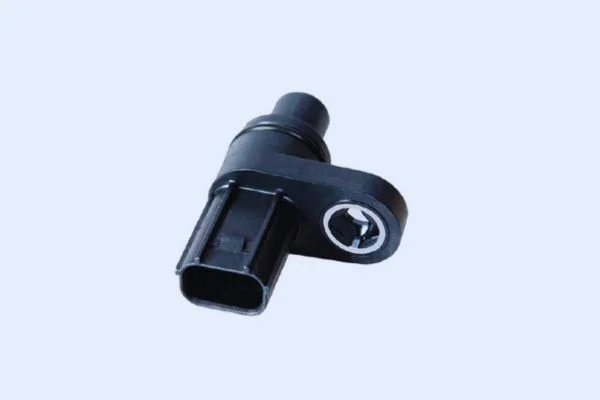Many ask, how to test a transmission speed sensor with a multimeter? Well, to test a transmission speed sensor using a multimeter, start by locating the sensor on the transmission. Disconnect the sensor from the wiring harness and set the multimeter to measure resistance (ohms). Connect the multimeter probes to the sensor’s terminals. A functional sensor should display a resistance within the specified range.
If the multimeter shows an open circuit or a resistance significantly different from the specified range, it indicates a faulty sensor that may need to be replaced.
What is a Transmission Speed Sensor?
A transmission speed sensor, also known as a vehicle speed sensor (VSS) or output shaft speed sensor, is an electronic device used in automobiles to monitor the rotational speed of the transmission’s output shaft.

It provides information about the speed of the vehicle to various systems, such as the engine control unit (ECU), transmission control unit (TCU), anti-lock braking system (ABS), and speedometer.
How to Test a Transmission Speed Sensor with a Multimeter?
Testing a transmission speed sensor with a multimeter can help diagnose issues related to the sensor’s functionality. The transmission speed sensor, also known as the output shaft speed (OSS) sensor, is responsible for measuring the rotational speed of the transmission’s output shaft.
Step by Step Guide
If you suspect a problem with the speed sensor, you can follow the steps below to know how to test a transmission speed sensor with a multimeter.
Step 1: Safety Precautions
Before you begin the testing process, it’s crucial to take the following safety precautions:
- Ensure the vehicle is parked on a flat surface and the engine is turned off.
- Engage the parking brake to prevent any movement.
- Disconnect the negative of the battery to avoid any electrical mishaps.
Step 2: Locate the Transmission Speed Sensor
The location of the transmission speed sensor varies depending on the vehicle’s make and model. Typically, it is mounted on the transmission housing near the output shaft. Consult your vehicle’s service manual or search online for the specific location of the speed sensor in your vehicle.
Step 3: Access the Sensor
To access the transmission speed sensor, you may need to remove some components or panels obstructing its view. Use appropriate tools to remove any necessary parts, such as underbody covers, heat shields, or electrical connectors.
Step 4: Identify the Sensor Terminals
Once you have located the transmission speed sensor, identify the sensor’s electrical terminals. There are usually two terminals on the sensor. The exact configuration may differ depending on the sensor type, so refer to your vehicle’s service manual for specific details.
Step 5: Set Up the Multimeter
Set your multimeter to the DC voltage (V) or resistance (Ω) setting, depending on the recommended testing method for your sensor. Check your vehicle’s service manual to determine the appropriate setting.
Step 6: Start testing the Sensor
Follow these instructions to test the transmission speed sensor:
- Connect the black multimeter probe to the ground terminal or a suitable grounding point on the vehicle.
- Connect the red multimeter probe to one of the sensor terminals. If you’re testing resistance, touch the red probe to one terminal; if you’re testing voltage, touch the red probe to the other terminal.
- Observe the multimeter display. If you’re testing resistance, the multimeter should show a specific resistance value within the expected range. If you’re testing voltage, the multimeter should display a voltage reading, typically in volts (V).
- Repeat the process for the other sensor terminal. The sensor functions correctly if the readings are within the expected range for both terminals.
Step 7: Interpret the Results
The interpretation of the multimeter readings depends on the sensor type and the manufacturer’s specifications. Here are some general guidelines:
1. Resistance Testing: If you’re testing resistance, compare the measured resistance with the resistance range specified in your vehicle’s service manual. If the resistance is significantly higher or lower than the expected range, it indicates a faulty sensor.
2. Voltage Testing: If you’re testing voltage, consult your vehicle’s service manual to determine the expected voltage range. If the voltage reading is outside the specified range, it may indicate a malfunctioning sensor.
Step 8: Reassemble and Retest (If necessary)
It is likely defective if the speed sensor fails the multimeter test or shows readings outside the specified range. In that case, you should consider replacing the sensor.
Reassemble any components or panels you removed during testing, ensuring they are properly secured. Afterward, you can retest the new sensor using the above steps to ensure proper functioning.
Step 9: Clear Fault Codes (If applicable)
If you replace a faulty speed sensor, you may need to clear any fault codes stored in the vehicle’s computer system. Use an OBD-II scanner or a similar diagnostic tool to clear the codes. This step will help reset the vehicle’s system and allow it to recognize the new sensor. Now, it is clear how to test a transmission speed sensor with a multimeter.
Signs of a Faulty Transmission Speed Sensor
A faulty transmission speed sensor can cause various issues with your vehicle’s transmission system operation. The transmission speed sensor, also known as the output shaft speed (OSS) sensor, is responsible for measuring the rotational speed of the transmission’s output shaft.
When this sensor malfunctions, it can lead to problems that affect the shifting of gears, speedometer accuracy, and overall performance. Below are some signs that may indicate a faulty transmission speed sensor.

1. Malfunctioning or Inaccurate Speedometer
An erratic or malfunctioning speedometer is one of the most common signs of a faulty transmission speed sensor. If the speed sensor is not providing accurate readings to the vehicle’s computer system, the speedometer may display incorrect speeds or fluctuate while driving.
This can make it difficult to gauge your vehicle’s actual speed, which is inconvenient and a safety concern.
2. Harsh Shifting or Erratic Gear Changes
A malfunctioning speed sensor can disrupt the transmission’s ability to shift gears smoothly. You may experience harsh shifting, where the transmission shifts abruptly or with a noticeable jerk.
Additionally, the transmission may struggle to shift gears at the appropriate times, leading to erratic gear changes. This can result in decreased acceleration, reduced fuel efficiency, and unpleasant driving experience.
3. Delayed or Sluggish Gear Engagement
The transmission may exhibit delayed or sluggish gear engagement when the speed sensor fails. You may notice a delay when shifting from park to drive or accelerating from a stop.
The transmission may hesitate before engaging the desired gear, causing a noticeable lag in acceleration. This can make it difficult to merge into traffic or navigate intersections safely.
4. Transmission Stuck in a Single Gear
A faulty speed sensor can cause the transmission to remain stuck in a single gear, usually in “limp mode,” as a safety measure. The limp mode protects the transmission from further damage by allowing it to operate in a limited gear range.
If your vehicle remains stuck in a single gear, typically second or third gear, it may indicate a malfunctioning speed sensor.
5. Check the Engine Light
In some cases, a faulty transmission speed sensor can trigger the illumination of the engine light on your vehicle’s dashboard. The vehicle’s onboard diagnostic system detects the irregularities in the speed sensor’s readings and alerts you to a potential issue.
When the check engine light comes on, it is recommended to have your vehicle scanned for trouble codes to identify the specific problem.
6. Erratic or Inconsistent Cruise Control
The speed sensor plays a crucial role in maintaining a constant speed when using the cruise control feature. If the speed sensor is malfunctioning, the cruise control system may not be able to accurately maintain the set speed.
You may experience speed fluctuations or an inability to maintain a consistent speed, requiring frequent adjustments of the cruise control settings.
7. Transmission Stalling or Overheating
In severe cases of speed sensor failure, the transmission can experience stalling or overheating. The lack of accurate speed input can lead to improper torque converter lockup or inadequate transmission fluid cooling.
If not addressed promptly, this can result in excessive heat buildup within the transmission, leading to fluid degradation, slipping gears, and potential transmission damage.
Safety Guide
Here’s a safety guide for automotive testing, specifically focusing on testing a transmission speed sensor:
- Wear Protective Gear: Always wear appropriate personal protective equipment (PPE) like gloves, safety glasses, and long sleeves. This protects you from sharp edges, hot components, and electrical hazards.
- Disconnect the Battery: Before starting any testing, disconnect the car battery to prevent electrical shocks and accidental short circuits. Always remove the negative terminal first and reconnect it last. Remember, car batteries can have up to 12.6 volts, which can be dangerous.
- Secure the Vehicle: Ensure the car is on a flat, stable surface and engage the parking brake. Use wheel chocks on at least two wheels to prevent any unintended movement. A rolling car can cause serious injuries.
- Avoid Hot Surfaces: Allow the engine and transmission to cool down before starting the test. Components can reach temperatures over 200°F (93°C), which can cause severe burns.
- Use Proper Tools: Use the correct tools for testing the sensor, such as a digital multimeter (DMM). Set the multimeter to the appropriate setting, usually in the range of 0-20 volts DC or the ohms setting, depending on whether you’re checking voltage or resistance.
- Follow Manufacturer’s Instructions: Refer to the vehicle’s service manual for specific instructions on locating and testing the transmission speed sensor. For example, resistance values for a typical speed sensor should be within a range of 500-1500 ohms. Exceeding this range indicates a faulty sensor.
- Check for Secure Connections: Ensure all electrical connections are secure and free of corrosion or damage. Loose or dirty connections can result in inaccurate test results or further damage. Use a contact cleaner if necessary and ensure connections are tight.
By following these safety guidelines, you can help ensure a safe and effective testing process for your car’s transmission speed sensor.
FAQs
How many ohms should a transmission speed sensor read?
The specific resistance value for a transmission speed sensor can vary depending on the vehicle’s make and model. However, a healthy transmission speed sensor should generally read within a specific range of ohms.
It is recommended to consult the vehicle’s service manual or contact the manufacturer to obtain the precise resistance specifications for the sensor.
How do you test a two-wire speed sensor?
To test a 2-wire speed sensor, you will need a digital multimeter. Start by disconnecting the sensor from the vehicle’s wiring harness. Set the multimeter to the resistance (ohms) mode and connect its probes to the two terminals of the sensor. A functional sensor should display a resistance within the specified range. I
How do you test a speed sensor voltage?
Testing the voltage output of a speed sensor requires a digital multimeter and a reference voltage source. First, disconnect the speed sensor from the wiring harness and set the multimeter to measure DC voltage.
Connect the multimeter’s positive probe to the sensor’s power supply wire and the negative probe to a known good ground. Apply power to the reference voltage source, such as turning the ignition key to the “on” position, and measure the voltage at the sensor’s power supply wire.
Conclusion
Testing a transmission speed sensor with a multimeter can be a straightforward process. One can determine whether the sensor is functioning properly by following the steps outlined below.
To begin the test, locate the speed sensor on the transmission. Depending on the vehicle, it may be located on the transmission housing or the output shaft. We hope now you know how to test a transmission speed sensor with a multimeter.

